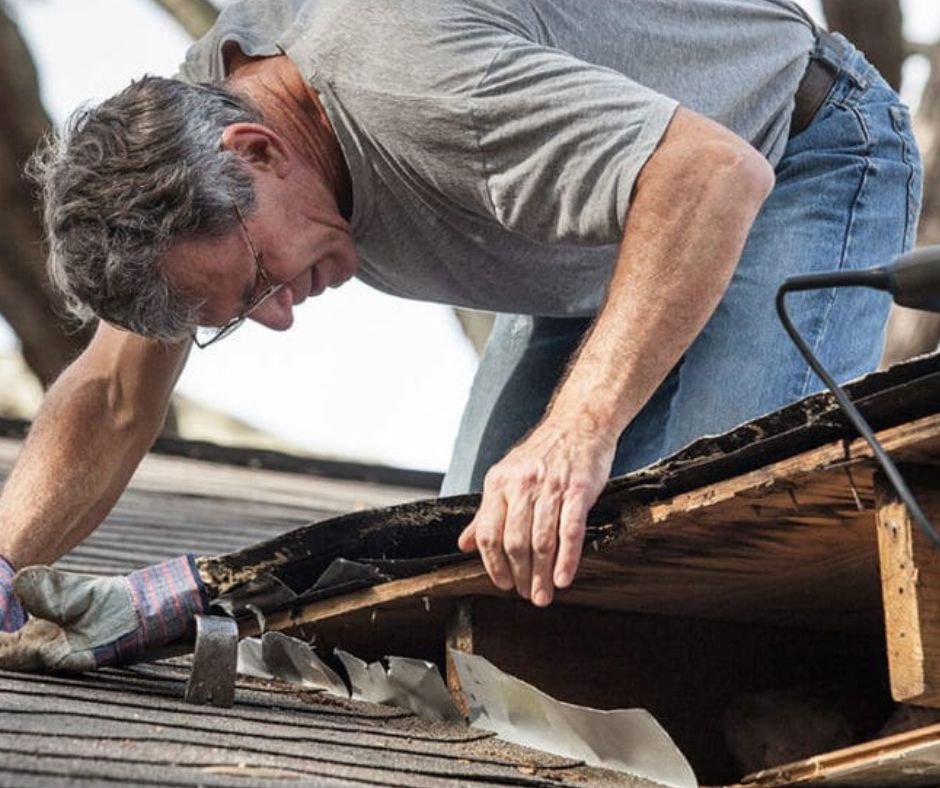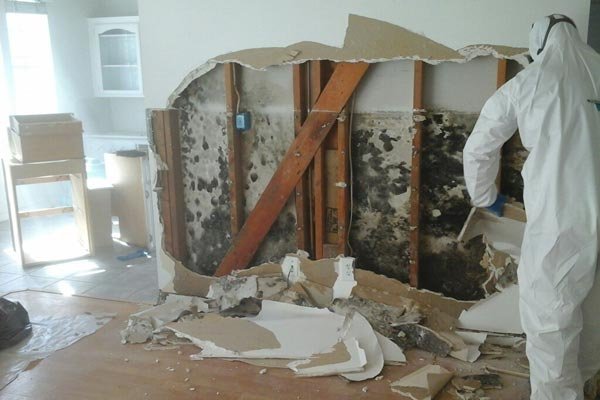MSE Environmental offers mold testing to spot mold contamination on your property. Our full mold inspection covers a visual assessment of indoor air quality. With this in mind, we'll talk about mold inspections and tests, their importance, and the four-step method for a mold inspection.
.What Are Mold Testing and Inspection?
Mold testing and inspection involve looking for mold on surfaces and in the air. That is, it involves identifying the type of mold and determining the extent of mold growth. Usually, a certified mold inspector does mold inspections and tests.
How Important Are Mold Inspection and Testing?
Mold can grow on any living thing with food, moisture, and the right temperature. It grows incredibly well on building materials like wood and drywall. Likewise, mold can cause building issues, such as weakened structures, and health issues, such as allergic black mold symptoms. Mold inspection and testing can detect mold's presence, identify the mold type, and determine the extent of mold growth. This information is, in fact, essential for planning to remove mold and stop it from growing again.
A Brief Look At the Four-Step Mold Investigation Process
This process needs both pre-testing and visual assessment. It also covers testing and post-remediation verification. During pre-testing, the property is looked at to see if there are any signs of mold growth. Then a certified mold inspector will then look around to see where water and moisture might be coming from. Part of making sure that the mold is really gone after remediation is to test for clearance.
How Mold Testing Is Done
Mold Testing is indeed a key part of finding mold contamination and getting rid of it. Here are some common types of mold tests:
Pre-Testing
Visual assessment
Moisture meter readings
Temperature readings
Find out if the building has any problems or a history of water getting in.
Air Sampling
A sampling of the atmosphere for mold spores
Indoor air quality assessment
Surface Sampling
Testing of any visible mold or suspected mold-contaminated surfaces
Verification of mold growth on materials
Mold Spore Sampling
Testing of settled dust or debris for the presence of mold spores
Detection of hidden mold contamination
Thus, these tests can assist a certified mold inspector in assessing the mold problem and choosing the best solution.
Is Mold Testing Worth It?
Mold testing is indeed the only way to find out if mold is growing in homes or businesses. But it may be pricey and take a lot of time, which makes some people wonder if it's worth it. Here are some pros and cons:
Pros of Mold Testing
Identifies the type and amount of mold: Mold testing helps you get rid of mold by telling you what kind and how much there is.
Protects against health problems: Mold can make people sick in many ways, especially if they have allergies, asthma, or a weak immune system. Indeed, mold testing can help identify mold spores that may harm health.
Gives you a proof in legal cases: Mold testing can be used as proof in court, like when a tenant and landlord debate mold contamination.
Cons of Mold Testing
Can be expensive: Mold testing can be pricey, especially if many samples from different parts of a building need to be taken.
Few details: Mold testing only tells you about the mold at the time of the test. It does not determine the cause of mold growth or future mold growth.
False positives and negatives: Some mold tests can yield false positives or false negatives. This can lead to treatment that isn't needed or not finding mold contamination.
Whether mold testing is worth it depends on the situation and the testing goals. It is always a good idea to choose a firm with good standing, like MSE Environmental. All in all, you need to weigh the pros and cons before deciding.
How Do I Prepare for a Mold Inspection?
A homeowner or business owner can take a few steps to prepare for a mold inspection.
Getting Ready for an Inspection
Find out about the inspector: Make sure that the inspector is certified and has a good reputation.
Take stock: Note any mold or water damage you can see in the building.
Fix what has to be fixed: Fix any mold, water damage, or leaks that you may see.
Provide access: Make sure the inspector can access attics, basements, and crawl spaces.
Clean up the place: Move furniture and other things away from the walls to make an inspection easier.
During the Inspection
During a mold inspection, the inspector will usually go through four steps to find mold problems in the building:
Visual assessment: The inspector will check for mold, water damage, and other problems.
Moisture detection: The inspector will use a moisture meter to find places where water has gotten into the building.
Air samples: The inspector may take air samples to test the atmosphere for mold spores.
Samples from the surface: The inspector may take samples from the surface to see whether there is mold.
Analysis After the Inspection
The inspector should put up a report on any mold problems that were found after the inspection. If mold exists, the report will usually tell how to fix the problem and how to know if the problem is fixed.
The Role of MSE Environmental in Mold Inspection and Testing
Who is and what does mse environmental do?
MSE Environmental is a professional environmental consulting firm that provides mold inspection and testing services. They have the knowledge and training to look at and test buildings for mold in homes and businesses.
MSE Environmental Offers a Range of Services.
Of course, MSE Environmental has an array of testing and inspection services for mold, such as:
Visual Assessment: This is the first part of a mold inspection. It comprises a thorough look around the property to find any obvious evidence of mold growth.
Moisture and Temperature Analysis: The next step is to find any problems with moisture and temperature that are causing mold to grow. MSE Environmental uses advanced tools to keep track of the moisture levels and temperature in the whole building.
Air Sampling: This is done by taking air samples to figure out how many mold spores are in the air. The lab will then look at these samples.
Surface Sampling: Surface sampling means taking mold samples from walls, floors, and ceilings. The labs will also look at these samples.
Mold Spore Sampling: This test analyzes mold spores from the air to assess their type and quantity.
Benefits of Hiring MSE Environmental for Mold Inspection and Testing
Hiring MSE Environmental to carry out and test for mold has some benefits, such as:
Expertise and Experience: MSE Environmental has been carrying out tests for mold for years and has the newest tools and technologies.
Accurate and Reliable Results: Their thorough mold test and inspection process gives exact and reliable mold detection and removal results.
Compliance with Standards and Regulations: MSE Environmental makes sure that all of its mold inspection and testing services meet the rules and requirements of the industry.
Comprehensive Reports: MSE Environmental gives full reports with testing and inspection facts and solutions.
MSE Environmental’s Commitment
Examining as well as testing for mold is essential to finding and fixing mold problems in homes and businesses. A good environmental consulting firm like MSE Environmental gives property owners and those who live peace of mind.
Does the CDC Recommend Mold Testing?
Mold is a common problem that can happen in homes as well as businesses. As we've just discussed, mold grows with water, heat, and organic ingredients. It's necessary to control moisture and fix building flaws that can lead to mold to have healthy indoor surroundings.
The CDC suggests mold testing in certain cases:
There are health risks linked with mold exposure, especially for people with breathing problems or weak immune systems
Mold is apparent, it could mean there is a bigger problem inside the building that is not obvious.
Testing is needed after mold removal to make sure it was done right
When testing for mold, it's important to think about both health problems and air quality within. If indoor air quality isn't good, it can certainly hurt your health and well-being. If you have health difficulties or suspect mold, a mold inspector can assess your home's air quality.
Most of the time, you may not need to test for mold on a regular basis. Hence, it is important to regulate the amount of moisture and fix building problems that create mold. Suppose you are experiencing any health symptoms or suspect mold growth. In that case, a certified mold inspector can look at the indoor air quality and any problems.
To Sum Up
A. Recap of Key Points:
Mold inspection and testing are indeed key for finding and solving mold issues in homes and businesses. A qualified mold inspector looks for mold in four steps: pre-testing, air sampling, surface sampling, and mold spore sample. Mold testing has some perks, such as finding the mold and figuring out where it came from. Still, it also has some cons, like being pricey and could be giving false positives.
B. Final Thoughts on Mold Inspection and Testing:
If you think mold grows on your property, you should call a licensed mold inspector like MSE Environmental. To get ready for a mold inspection, get rid of any visible mold and find places where water gets in. Additionally, the CDC says that high indoor air quality can avoid health problems caused by mold. Finally, you can ensure your house is mold-free and your family can breathe securely with a mold inspection and testing.













Disaster readiness for Hurricane Milton is essential for recovery. Learn practical steps for your facilities’ safety with MSE Environmental Consulting Services.